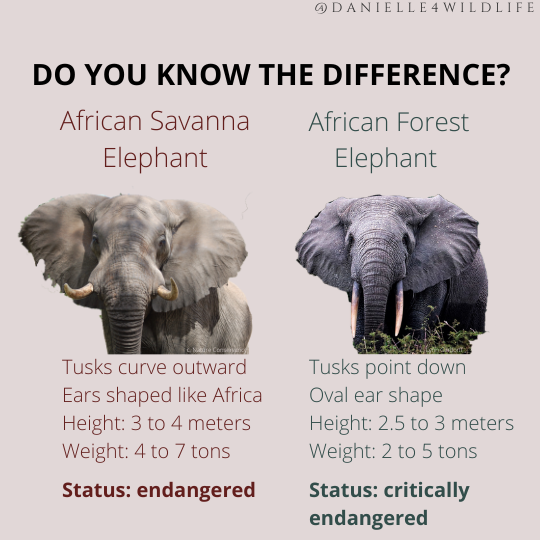What’s the Difference Between a Savanna and Forest Elephant?
African forest elephants (Loxodonta cyclotis) are an entirely different species from savanna elephants (Loxodonta africana) and therefore have several differences. Until recently, the forest elephant was considered a subspecies of the African savanna elephant; however, scientists have found significant genetic differences in the last few years.
This is a crucial distinction because subspecies can interbreed, while separate species usually cannot. However, genetics isn’t the only thing setting these two species apart; they have several physical differences that will help you identify the two species from one another.
Size
African forest elephants are generally smaller than African savanna elephants. Since they live in the forests of central Africa, they must navigate small corridors in a way that savanna elephants do not. This plays a major role in body size and is one way to tell the two species apart.
Tusks
The tusks of a forest elephant point straight down, whereas a savanna elephant’s tusks curve upwards. Since forest elephants live in a more lush environment, they spend a lot of time digging with their tusks. Having their tusks point directly towards the ground makes this behavior significantly easier.
African savanna elephants don’t need to dig as much because they reside in more arid regions where fewer minerals and plant matter are growing in the ground.
Ear Shape
A distinguishable characteristic of the savanna elephant is its ears that resemble the continent of Africa. These giant ears aid in cooling their body down in the hot African sun by cooling the blood that’s in the ears. As they flap the ears, the blood level drops, and as the blood circulates, it cools the body.
Since forest elephants live in a slightly cooler environment and have more shelter from the hot sun, their ears are slightly smaller. The ear shape is more of an oval than an Africa shape as well.
Range
The names of these two species give away their range habitat, but let’s talk about countries. The African forest elephant is primarily found in central and west Africa. You’re most likely to see these elephants around Uganda, Rwanda, the Democratic Republic of the Congo, Central African Republic, Gabon, and Congo.
You’re most likely to find savanna elephants in southern and East Africa, with some of the largest herds found in Kenya, Tanzania, Botswana, and South Africa. However, you can spot savanna elephants in central Africa; they’ll simply be in a different habitat than the forest elephant.
Status
The African forest elephant population is critically endangered and continuing to drop in numbers. The African savanna elephant is endangered and also decreasing.
These species are on the brink and require consistent support from conservation groups and governmental organizations to prevent extinction. With more enforcement on the import and export of ivory, these species will have more of a fighting chance.





